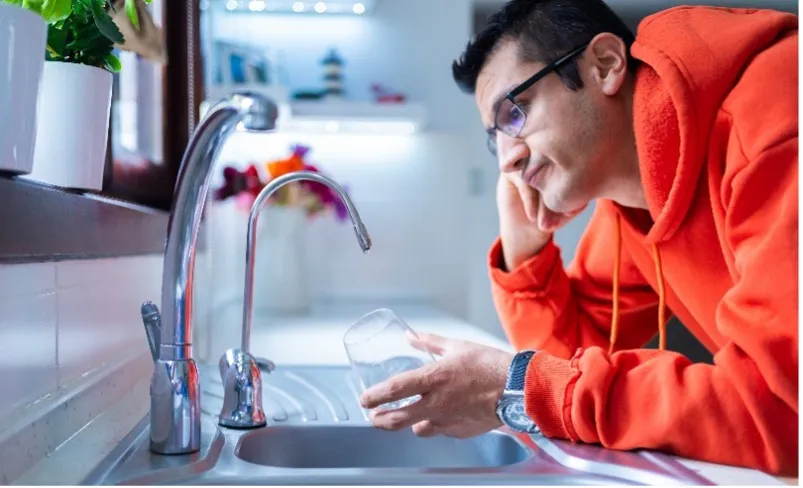Common Plumbing Warning Signs That Could Be Risky to Ignore
By Brian Sodoma, for McKinley Heating Service Experts
As we move into winter, many homeowners often prioritize checking their furnaces and other heating equipment, potentially forgetting about other important systems. While protecting your heating is always smart, your home’s plumbing system may need some attention too.
You may want to consider a regular plumbing checkup. After all, plumbing issues are often only discovered after something breaks, but chances are your system might have been trying to alert you to the trouble. To help you avoid more extensive repairs, here are five often overlooked signs that your plumbing system needs immediate attention.
1. Poor Pressure
If your home’s water pressure falls suddenly, that’s often because there’s an issue with the water supply. It could be a failure somewhere along the main line to your home or a pipe within it, explained BJ Richardson, a McKinley Heating Service Experts plumbing manager.
However, if the drop in pressure is isolated to one room, like the bathroom or kitchen, it may be a fixture problem. It might be a simple fix, like replacing your faucet aerator or addressing a water heater issue. Or it could possibly be something a little more complex, like a supply line leading to that room.
“I always remind homeowners to review their water bill too. If the pressure drop comes at a time when you suddenly see a higher bill, there could be a deeper problem,” Richardson said. “It’s smart to check your water meter to see if it’s running even when no appliances are turned on. That’s another way we determine you have a leak somewhere.”
Occasionally a sudden change in pressure can be related to the municipal supply – if so, that is easily fixed by a booster pump.
2. A “Sewer” Smell Somewhere in the Plumbing
“While clogs in the kitchen or bathroom sink can sometimes cause unpleasant odors in the plumbing, a persistent odor of rotten eggs suggests a serious concern. Drains include traps and vents inside them and one of these components can fail. If the smell lingers, you may have to consider a blocked sewer or even a sewer gas leak. Identifying and addressing these problems is best left to the professionals, Richardson said.
Remember that even though propane and natural gas possess a distinctive smell, such leaks can be confused as a sewer smell. When in doubt, reach out to a professional.”
3. Discolored Pipes
Discoloration and visible wear on exposed pipes represent other signs that can be easy to overlook. If you’re in a room with exposed plumbing, it’s smart to check all the pipes in plain view. Noticeable wear and discoloration usually indicates the presence of a leak.
Discoloration commonly occurs in an area of the plumbing where two pieces of piping meet. Ignoring such discoloration is risky when it comes to supply lines because they are pressurized, Richardson explained. When an exposed pipe breaks, it can start flooding your home very quickly.
With certain pipes, discoloration comes from the different chemicals municipal services employ for water treatment.
4. Poor Drainage
We understand it may be tempting for homeowners to remedy clog-related problems with liquid drain cleaner, but this is usually only a temporary option and can potentially damage your plumbing system. Even if we’ve all heard of clogs caused by hair, the truth is hair is not the true culprit. Household products including cleaning supplies, toothpaste, hand soaps and even the natural oils from our skin create a sticky scum on the drain walls that catches hair and other small particles, which most liquid drain cleaners won’t remove. The use of a mechanical snake or drain machine will be the most effective approach to clear out this type of obstruction. Often, if a clog is right inside the pipes below the sink, clearing it out usually solves the problem. But if it doesn’t, it could indicate a more significant issue.
“The thing you ought to keep an eye on is if multiple drains are constantly clogging, and the problem doesn’t go away itself even after you clean the drain under those sinks,” explained Brian McMasters, a McKinley Heating Service Experts division plumbing manager. “The sewer line may also need cleaning, but in some plumbing systems, the cause of the problem is tree roots that slowly damage and crack a sewer line. Fixing this kind of damage is obviously more complex to perform and requires trenching down into the ground until we find the exact location of the leak to repair it.”
5. Standing Water in the Yard
Regularly examine all around your house, including your yard. It’s advisable to try and take a look every week. Frequently, a broken underground water or irrigation line leak, or even a sewer main line leak, shows itself gradually, once a significant amount of water has already leaked out. Keep an eye out for soft, sunken spots in the grass as these can indicate a hidden issue.
“You also want to notice things including sudden green patches in typically dry or yellow areas of the lawn,” mentioned McMasters. “In our experience, that’s a sign there’s a problem a trained plumber can solve.”
Learn what you need to know about avoiding common issues with plumbing systems and receive expert help at McKinley Heating Service Experts.

